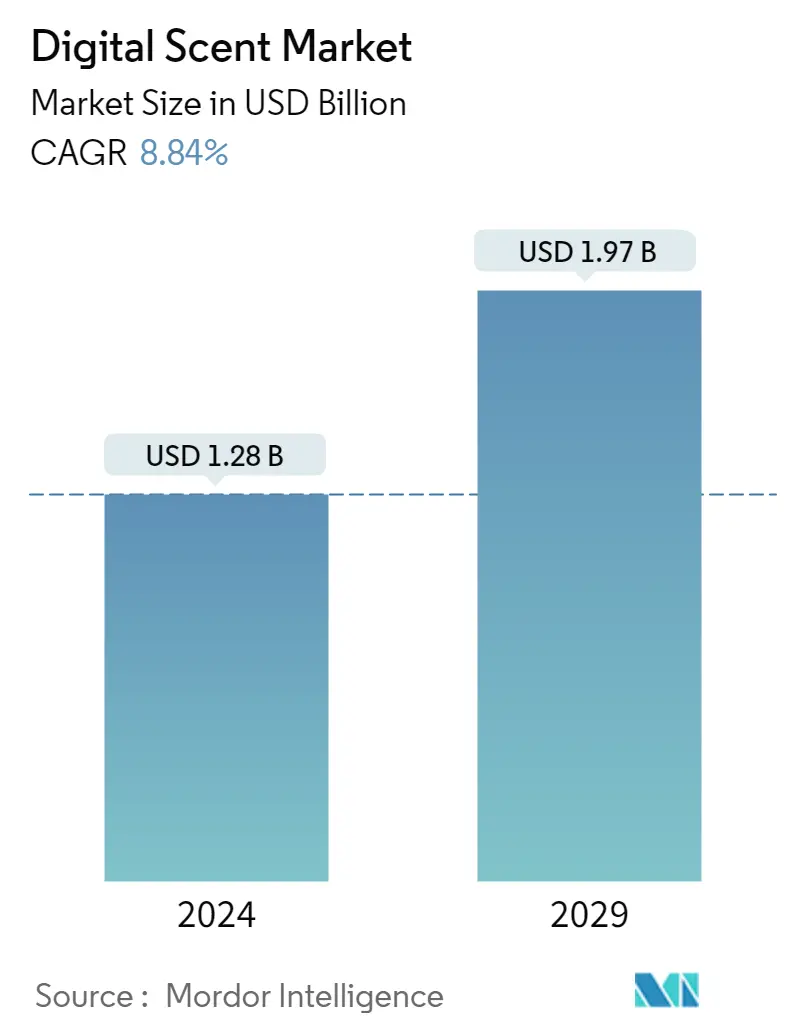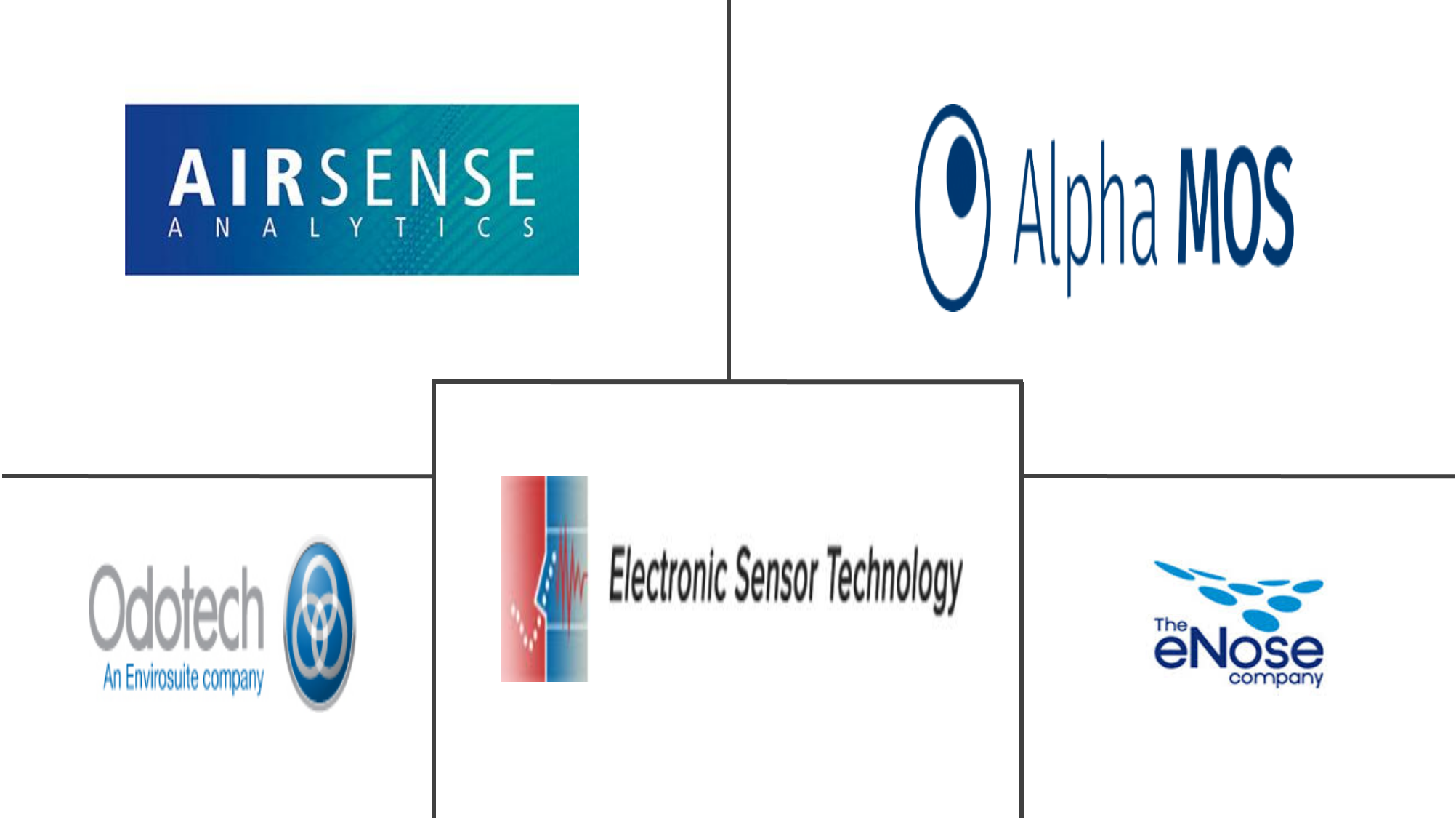Market Size of Digital Scent Industry

| Study Period | 2019 - 2029 |
| Market Size (2024) | USD 1.28 Billion |
| Market Size (2029) | USD 1.97 Billion |
| CAGR (2024 - 2029) | 8.84 % |
| Fastest Growing Market | North America |
| Largest Market | North America |
Major Players
*Disclaimer: Major Players sorted in no particular order |
Need a report that reflects how COVID-19 has impacted this market and its growth?
Digital Scent Market Analysis
The Digital Scent Market size is estimated at USD 1.28 billion in 2024, and is expected to reach USD 1.97 billion by 2029, growing at a CAGR of 8.84% during the forecast period (2024-2029).
The Digital Scent Technology Market is expected to increase steadily over the forecast period, owing mostly to technological advances for establishing a sense of scent in online communication. Currently, three senses are involved in internet communication: hearing, touching, and sight. One of the notions of virtual reality is the digital smell. In general, the digital smell is a combination of hardware and software technology.
- In the quality assurance division of the fragrance industry, digital scent technology has been used more and more. Further, to streamline the labor-intensive and time-consuming quality control process, the expanding global fragrance business is investing more and more in digital scent technology and focusing on meeting the market's highest criteria, the top fragrance industries. Digital olfactory sensors can monitor changes in perfume after exposure to specific skin types or environmental factors. The market for digital scent technology has expanded due to these appealing features of digital noses.
- In many applications, including those involving perfumes, food and beverages, and other technologies, digital scent technology is highly dependent on human ability. Even police dogs have limited ability to detect and distinguish between distinct odors. The information took time to quantify and process as a result. However, businesses like IBM and E-Nose Systems have successfully used AI to process further and categorize the scents. With AI, it is now possible to gain more sensitivity and expand the system's capabilities. IBM's algorithm has simplified the labor-intensive manufacturing procedure needed to make lab-made fragrances and odorants.
- According to the International Telecommunication Union, 51% of the global population uses mobile-cellular devices, with around 4 billion having internet access. Researchers have been expanding the installation of Digital Scent Technology in-built into smartphones due to the widespread availability of smartphones with internet connectivity worldwide. In recent years, the industry has seen the introduction of Digital Smell. Researchers hope to create virtual-reality long-distance discussions. This will give users a true sensation of sight, speech, and smell. These advancements will significantly impact the global Digital Scent Technology Market. Major market players have already invested in research and development to build these smartphone systems.
- In order to effectively combat the pandemic, it is crucial to have the ability to swiftly and affordably screen people for COVID-19. NASA is using its expertise to aid with this effort. The Department of Health and Human Services has provided NASA with USD 3.8 million to improve the E-Nose device created at NASA's Ames Research Center in California's Silicon Valley using patented nanosensors and nanosensor array technology for COVID-19 detection. NASA is developing E-Nose, a smartphone-based gadget, to detect COVID-19 by "sniffing" a person's breath. It is based on technology previously used to help monitor air quality inside spacecraft.
- The digitalized smell sensor technology of the E-noses and the scent synthesizer technologies must be improved by reliable airflow. These elements have decreased the E-noses' product value. These technologies are heavily used in enclosed spaces where the airflow is controlled, and other environmental odors don't interfere with one another. These limitations have limited the industry's use of E-noses and other technologies. Identifying and measuring the odor in the little concentration is the main challenge. There is a larger likelihood of significant signal interference when an odor is present in low concentrations.
